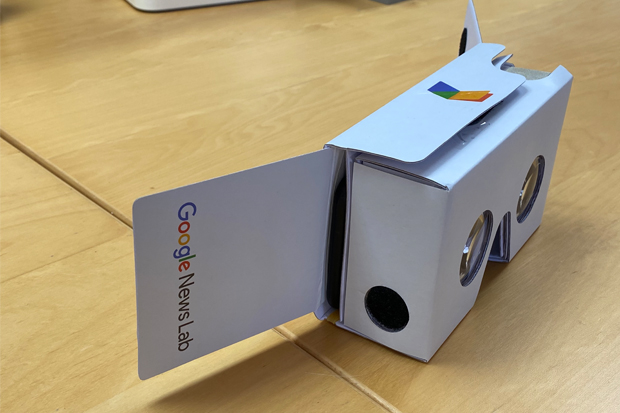
China Daily, the English-language Chinese news organisation, used 360° video and surround-sound audio during the 2019 Hong Kong riots as a way to preserve the historic event in time and allow audiences to revisit the scenes as if they were there.
Events at the Hong Kong Polytechnic University show a variety of conflict scenarios, including petrol bombings, blockages and police intervention. On the scene capturing the footage was DJ Clark, visual journalist, China Daily.
While 360° video tends to be written off as a gimmick or novelty, he said it could act like a 'museum' for future audiences to see how the events unfolded.
"Any of the biggest news events of the past have news content showing what it was like," explained Clark, stressing that these events will be spoken about for years to come.
"This could give you a different experience of what it was like [to be there] in the middle of it all."
The use of 'ambisonic sound' is especially important, he said. Traditionally, it has been hard for journalists to capture surround-sound noise because they are pointing microphones in all directions and audiences are listening to stereo or mono sound.
Using the Go Pro Max, which has a built-in 360° camera and microphone, means journalists can naturally capture video and audio from above and behind them, rather than being restricted to just left and right. For audiences, this means can enjoy a full-sphere 'cinematic' sound experience when using virtual reality (VR) headsets, like the HTC or Oculus.
This, Clark said, is the optimum experience. However, he admits there is a financial barrier for many audiences who cannot stump up hundreds of pounds for the novelty - though he sees the price point reducing over time.
Some plastic and cardboard alternatives, which you slot your smartphone into, are a cheaper and more accessible alternative - provided you use over-the-ear headphones and the sound is coming in directly.

You can simply load the video in the YouTube app and point it around the room - but it will not create the immersive experience it is intended for.
These are all potential benefits for audiences - but the use of 360° gear can be of great use to journalists in conflict situations. He admitted he only started shooting in 360° because it allowed him to be constantly rolling and filming in all directions.
"I was finding that I kept missing shots because everything was happening so fast," Clark said.
He can quickly cut out a 16:9 frame from the 360° footage and send it back to the office for any breaking news content. The limitation is, of course, 360° is best suited for close-range action, and for even more serious conflict situations than these, the temptation to get closer for a better shot could be a real safety concern.
As it stands though, audience demand and monetisation options for 360° video content remain to be proven. Clarke reasoned that it does not fit into day-to-day lives and news habits in the same way that smartphones, for example, do.
"You would feel a bit silly wearing a VR headset on a train, wouldn't you?" he joked.
So for now, it may not be anyone's first choice for a news format. But it has some promise for evergreen and archival content, and also makes use of 360° footage that would be produced anyway.
"360° gives you another format; whatever we can do to bring audiences to our news is a good thing," he concluded.
Want to receive journalism news and job updates straight to your phone? Subscribe to Journalism.co.uk on our Telegram jobs channel for latest job opportunities, and our news channel for a weekly digest every Monday morning.
Free daily newsletter
If you like our news and feature articles, you can sign up to receive our free daily (Mon-Fri) email newsletter (mobile friendly).
Related articles
- Six career lessons in war and conflict reporting
- New project InOldNews wants to improve representation in video journalism
- Unveiling the lessons of a war reporter's journey, with Andrea Backhaus
- How AI can help journalists track MPs financial interests
- Tools for journalists: Missing Perspectives Directory, for connecting newsrooms with women









